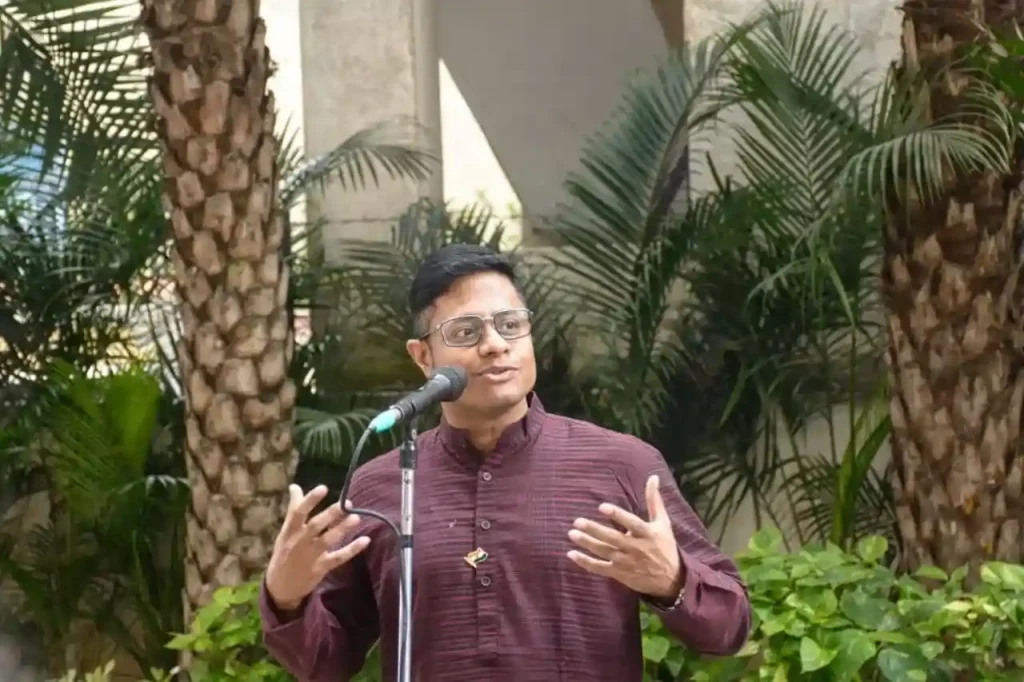
What is Business Economics? A Guide for Startup Founders
All articles What is Business Economics? A Guide for Startup Founders By Ketul Updated 21 May, 2025 10 min read source: Google Contents Main Menu
We aren’t lying when we say that there is a new water source in Bengaluru that is making lives more sustainable. White water is a new source different from the commonly available water sources, namely rainwater and groundwater.
So what is White water? It is referred to the usable water obtained after treating discarded wastewater from the sewage of the apartments and buildings. It is being used by the IT complexes, huge malls, industries and apartments in Bengaluru. But, most importantly, it has helped prevent 54 crore litres of water from going to waste and also helped reduce the users’ operational costs. If this isn’t impressive enough for you, then keep reading more.
Founded by Vikas Brahmavar and managed alongside Gowthaman Desingh, Transwaters is providing solutions to the people of Bangalore and is soon expanding to other cities. Based in the year 2011, Transwaters provides water treatment solutions that are pocket friendly and significantly impact the environment.
Transwater has helped prevent 54 crore litres of water from going to waste and also helped reduce the users' operational costs.
In our recent interview with Mr Vikas Brahmavar, we discussed the urgent need for a better create abundance of water. We were astonished by how Transwaters acted as a bridge between apartments and business complexes.
The mission of the Transwater systems is to cater to 20% of Bangalore’s Industrial Water Requirement by converting 2700 Cr lts /year of excess STP treated water to high-quality water suitable for reuse by 2030.


Before starting Transwater, Vikas worked as a software engineer and investment banker in London. It was 2009 when Vikas decided to quit London and work for India. But the decision was not this spontaneous.
One day, sitting on the banks of the Thames and having lunch with his friends, Vikas noted how the Thames was peaceful, divine and had no foul smells. During a Christmas party, the group of friends had a rush of patriotism and decided to quit their jobs the next day, return to India, and work for their home country. Long story short, Vikas was the only person to quit the next day and return to India, intending to work for water.
From living in a 14-floored comfortable building to standing in a plumbing shop under the scorching sun, this big transition made Vikas feel like a complete mess. After coming back to India, Vikas started working on the water.
With imports from Florida, he started working on ways to remove chemicals from water bodies in an enviro-friendly way. However, due to the heavy investments, Vikas dropped the idea and continued to earn his living as a trader.
The trading continued till 2014 when Vikas have had enough of living for earning. He wanted to pursue his desire to create abundance of water in Bengaluru. After researching about the technologies and systems used by water scarce nations like Israel. Despite being blessed with a few natural sources of water, Israel continue to provide water to its citizens by treating waste water.
Israel is presently reusing almost 75% of all the sewage produced in the country. The Water Law of 1959 and the policy enacted by the administration until today define sewage as an integral part of the water resources of the country.
- International survey of waste water reclamation and reuse practice, 2008 Tweet
It was when he realized that Indians focused more on the volume of water coming into the cities rather than being accountable for the amount of water going out.
Vikas soon realized that trading was not his cup of tea. But, after two years, he became aware of the kind of impact he has on the world, even though it is about getting one order per day.
“I found this very wrong. There are 200 crore litres of water being drained in Bengaluru daily. This equals 13 lakes being created just from drained water every month.” Said, Vikas.
“Many countries had the same situation as India some years ago. Initiatives like these helped them.” “And now it’s all worth it because no one in India is doing what we’re doing. And India needs it.” Reflects Vikas.

As much as 1,450 MLD of potable water is pumped from Cauvery, and 450 MLD of groundwater is extracted daily to quench millions’ thirsts and support diverse livelihoods in this thriving metropolitan city. The minute after its usage, precious potable water becomes sewage, reports Deccan Herald.
According to governmental regulations, any building with more than 20 units is required to have STP. Yet many societies do not adhere to these standards. In these communities, sewage is cleaned up to be used for flushing or gardening.The garden only takes up a little room because of the vertical living spaces. As a result, 80% of the STP’s treated water is discharged. A survey of 200 units conducted by Vikas revealed that most flats had a similar waste situation.
STP treatment costs as a whole are a waste as well. When combined with untreated water, this water becomes untreated and then travels to the ‘nalla’ (sewer).
The water goes to the lakes because STP is only needed for minimal requirements and discarded to the lakes. For example, nearly 198 of the 200 lakes are receiving sewage in Bangalore
Every day, 1440 MLD of sewage is generated in Bengaluru, and untreated sewage enters the water ecosystem, adversely polluting the water bodies and affecting lives and all other life forms. The unprecedented danger to modern-day life is the pollution of water bodies.
- International survey of waste water reclamation and reuse practice, 2008 Tweet
White water is referred to when the treated excess water (which is drained) is collected and converted into portable drinking water. To know more, check out Transwater’s website to check how the water is suitable for further use. This highly scientific technique is super safe and involves techniques like water softener, pressured sand filters, activated carbon filters, UV water disinfectant and other methods.
The use of white water in industries reduces the dependency on freshwater. Apart from that, users have also reported a 75% reduction in operational costs. In addition, the use of white water for cooling towers also reduced the chemicals used. If you want to use white water for IT parks, malls, and commercial buildings, click here.
Transwater systems can be fitted into old systems by digging the space equal to two car parking. With over 730 customers served, Transwater is bridging the gap by connecting the old methods and making them savvier.
Targeting the cities that, according to studies, will run out of water soon is part of their plan, which also involves expanding the model into Chennai and Hyderabad. However, the lack of adequate infrastructure makes it challenging to grow in rural areas. Government assistance would be needed because there need to be more resources to establish a proper infrastructure.
The main issue faced by the team of 14 is changing the mindset of people towards white water. Many people in the urban areas had questions regarding the use of white water. Such trust issues came forward as people needed to be more sure of the quality of the water. White water doesn’t have any odours or E.coli, which is frequently found in borewells and tanker water which is usually supplied to residences. Changing this mindset is proving to be tough and will vary with awareness.
Till then, Transwaters is focused on providing white water to industries, complexes, IT parks and commercial buildings, which have recurrent demands due to decreased operational costs. Targeting such huge complexes also helped Transwater to save over 30 crore litres of water per year.
If not for this system, water would continue to drain out of Bangalore into the drains.
With three years of business operation, Transwaters has the potential to save four lakes.
“Seventy-five per cent of fashion supply chain material ends up in landfills. This amounts to ‘the equivalent of one garbage truck of textiles per second."
Pulse of the Fashion Industry 2018 Report Tweet
“Although there is a lot of interest in the field, it is difficult due to time and failure constraints. Once, because of the threats of the tanker guys, we had to relocate to a different flat. Each day, 200–280 cr litres of liquid are wasted.
A 100-unit complex uses 50,000 litres of water per year, of which 30,000 litres are wasted. In addition, lakes which were previously used for freshwater storage are all contaminated now.”
“There is scope in this field. Look at how people are digging up to 1000 ft for water.”
“Our approach should be to produce abundant water. Water scarcity led to a philosophy of water conservation where we consider where to use the least expensive technologies. Instead of thinking in terms of scarcity, we want to think in terms of abundance and recovery. In addition to rain and the ground, white water will be the third water source.”
Vikas’s final advice included not working for money but making fundamental changes and solving problems. Also, focus on having a good social presence.
Get on step closer to making eco-friendly choices

All articles What is Business Economics? A Guide for Startup Founders By Ketul Updated 21 May, 2025 10 min read source: Google Contents Main Menu

All articles How to Choose the Right Government Funding Scheme for Your Startup in India By Ketul Updated 24 Dec, 2025 10 min read source:

All articles Government Funding Schemes for Startups in India: A Complete, Actionable Guide for Founders (2025) By Ketul Updated 24 Dec, 2025 10 min read